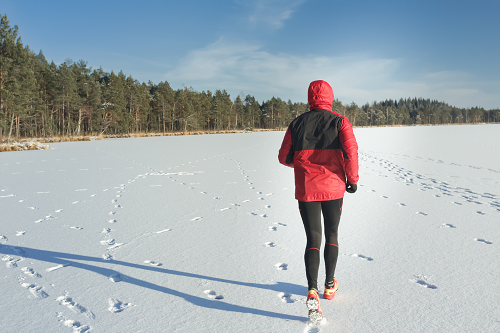

Ice, snow and freezing temperatures are part of endurance events in the winter. But when those conditions become too harsh, bad things can happen – as they did when an unseasonably early blizzard dumped more than a foot of snow in Utah, stranding 87 runners.
It was early October when an unexpected blizzard in East Mountain Wilderness Park in Kaysville, Utah, suddenly brought down 12 to 18 inches of snow on runners in the DC Peaks 50 ultramarathon. Runners found themselves stranded on a trail with 12,000 feet of vertical gain and 10,000 feet of descent, according to NBC News.
Rescuers from multiple jurisdictions fanned out to reach and rescue the athletes, many of whom were already suffering from hypothermia.
“Davis County Sheriff Kelly Sparks confirmed all runners have been rescued and are safely off the mountain. Search and rescue teams rescued runners from across different locations spanning Francis Peak, Thurston Peak and Farmington Canyon,” noted abc4.com. “Search and Rescue personnel covered the entire racecourse for several hours on foot along with 4x4s and snowmobiles.”
Even though it was early in the season for snow, said Sparks, competing on the mountainside can be fraught with risk.
“Venturing onto the mountains, trails and bodies of water at this time of year can be dangerous because the weather changes rapidly and conditions can quickly become life-threatening,” Sparks said. “Even a mild rain in the valley can translate to blizzard conditions at higher elevations. The rapid and collaborative response of our Search and Rescue volunteers, race organizers, and first responders from multiple agencies resulted in minimal injuries and all runners returning home safely.”
But not every race story has a happy ending – and not all bad weather comes in the winter. In May 2021, CBS reported that 21 people died while competing in an ultramarathon in in northwestern China when hail, freezing rain and gale-force winds hit the high-altitude race.
Following an all-night rescue operation in freezing temperatures involving more than 700 personnel, rescuers were able to confirm that 151 people were safe, out of a total of 172 participants. Twenty-one had died, according to the official Xinhua News Agency, which said the runners suffered from physical discomfort and the sudden drop in temperature.
The runners were racing on an extremely narrow mountain path at an altitude reaching 2,000-3,000 meters (6,500-9,800 feet) when weather conditions hit. The 100-kilometer (62-mile) race was held in the Yellow River Stone Forest tourist site in Baiyin city in Gansu province. According to the New York Post, the bad weather hit hours into the run and some athletes became disoriented in the heavy rain, hail and heavy winds. (Among those killed were an endurance racing champion and a Chinese Paralympian, proving that no matter how fit or well prepared an athlete is, unexpected conditions can have the last word.
Race directors have long sought to let athletes know of the risks in advance; for example, the website of the Western States 100-Mile Endurance Run (held in June in California) has an extensive list of the risks facing runners, it notes information including the fact that the inaccessibility of much of the trail may make it difficult or impossible for medical assistance to reach the runner in a timely fashion; in fact, “many sections of the trail are accessible only by foot, horse or helicopter.” Other trails, some hosting mountain biking though not necessarly endurance events, have been shut down because of liability concerns in general.
Western States is far from the only endurance run to have precautions; however, judging from the recent chatter on social media, athletes also need to do more in order to be prepared – and to exercise caution when bad weather strikes.

